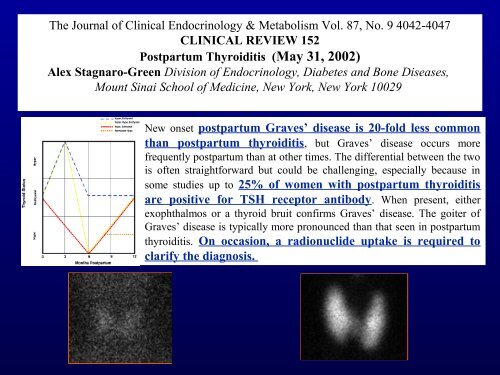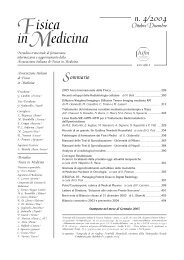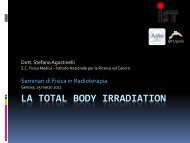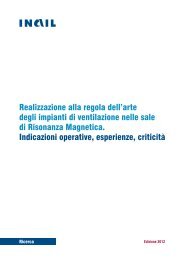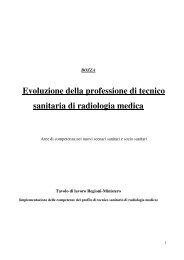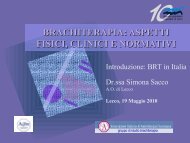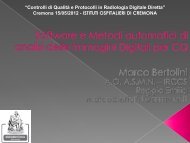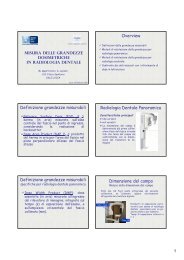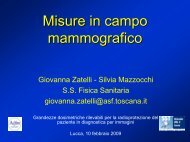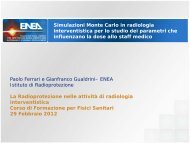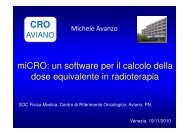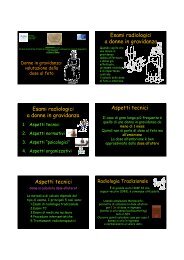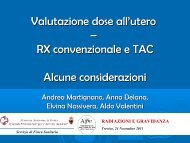Presentazione di PowerPoint
Presentazione di PowerPoint
Presentazione di PowerPoint
Create successful ePaper yourself
Turn your PDF publications into a flip-book with our unique Google optimized e-Paper software.
The Journal of Clinical Endocrinology & Metabolism Vol. 87, No. 9 4042-4047<br />
CLINICAL REVIEW 152<br />
Postpartum Thyroi<strong>di</strong>tis (May 31, 2002)<br />
Alex Stagnaro-Green Division of Endocrinology, Diabetes and Bone Diseases,<br />
Mount Sinai School of Me<strong>di</strong>cine, New York, New York 10029<br />
New onset postpartum Graves’ <strong>di</strong>sease is 20-fold less common<br />
than postpartum thyroi<strong>di</strong>tis, but Graves’ <strong>di</strong>sease occurs more<br />
frequently postpartum than at other times. The <strong>di</strong>fferential between the two<br />
is often straightforward but could be challenging, especially because in<br />
some stu<strong>di</strong>es up to 25% of women with postpartum thyroi<strong>di</strong>tis<br />
are positive for TSH receptor antibody. When present, either<br />
exophthalmos or a thyroid bruit confirms Graves’ <strong>di</strong>sease. The goiter of<br />
Graves’ <strong>di</strong>sease is typically more pronounced than that seen in postpartum<br />
thyroi<strong>di</strong>tis. On occasion, a ra<strong>di</strong>onuclide uptake is required to<br />
clarify the <strong>di</strong>agnosis.


